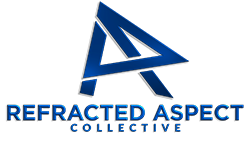
Many teams rely on multiple systems to manage their work, but when those systems don’t communicate effectively, the result is confusion, duplicated effort, and lost time. Understanding how many tools your team uses and whether they integrate seamlessly is critical to improving operational clarity and efficiency.
- Assessing Your Team’s Systems: The Core Question
- How Many Systems Are Your Team Using, and Do They Actually Talk to Each Other?
- Why Tool Sprawl Persists: The Organizational Root Cause
- Unseen Dynamics and Blind Spots in Managing Multiple Systems
- Practical Interventions for Lean Teams Managing Multiple Systems
- Strategies for Scaling Teams Facing Tool Sprawl and Integration Challenges
- Preparing for Succession and Transition: Reducing Founder Dependency on Systems
- Indicators That Your Systems Are Becoming More Integrated and Effective
- Frequently Asked Questions
- Reframing the Challenge of Tool Sprawl and Integration
- Next Steps with Refracted Aspect
Assessing Your Team’s Systems: The Core Question
The number of systems your team uses to get work done and their ability to communicate directly determines operational efficiency and clarity. When systems multiply without integration, teams face fragmented workflows, inconsistent data, and avoidable delays. The solution is straightforward: reduce unnecessary tools and ensure remaining systems share data and processes transparently. This approach eliminates confusion and wasted time, enabling teams to focus on execution rather than coordination.
How Many Systems Are Your Team Using, and Do They Actually Talk to Each Other?
Your team is likely using more systems than necessary, and most of those systems do not communicate effectively. This disconnect creates friction that slows decision-making and execution.
Effective teams operate with a streamlined set of tools that integrate data and workflows. Each system should serve a clear purpose and connect with others to avoid manual data transfers and duplicated work.
When systems don’t talk, teams spend excessive time reconciling information, chasing updates, and managing exceptions. This inefficiency is a direct drain on productivity and morale.
To fix this, identify core systems that must integrate and eliminate or consolidate redundant tools. Prioritize platforms with open APIs or native integrations to ensure seamless data flow.
Once you have a connected ecosystem, your team can trust the information they see, reduce errors, and accelerate progress. This clarity is the foundation for scalable, reliable operations.
Understanding this principle is the first step toward addressing the deeper organizational causes that allow tool sprawl to persist.
Why Tool Sprawl Persists: The Organizational Root Cause
The primary driver behind tool sprawl and disconnected systems is decentralized decision-making combined with unclear ownership of technology strategy. In many organizations, individual teams or leaders select tools independently to solve immediate problems without a coordinated plan.
This autonomy leads to a patchwork of systems that don’t align or integrate. Each group optimizes for their local needs, often unaware of the broader operational impact or duplication elsewhere.
Compounding this is the absence of a centralized governance model for technology adoption and integration. Without clear accountability for the overall system architecture, new tools are added reactively rather than strategically.
Resource constraints and competing priorities also play a role. Teams under pressure to deliver quickly may choose quick fixes over scalable solutions, further entrenching disconnected systems.
Over time, these patterns become embedded in daily operations, making it difficult to reverse course without deliberate leadership intervention. Even capable organizations with good intentions fall into this predictable cycle.
Recognizing this systemic dynamic helps leaders understand that tool sprawl is not a failure of individuals but a structural challenge requiring coordinated strategy and governance.
Unseen Dynamics and Blind Spots in Managing Multiple Systems
One common blind spot is underestimating the long-term costs of short-term fixes. Leaders often focus on immediate functionality or user preference when selecting tools, overlooking how these choices affect cross-team collaboration and data consistency.
Another overlooked factor is the cultural dynamic between departments. When teams operate in silos, they prioritize their own workflows and resist standardization, unintentionally perpetuating fragmentation.
Leaders also tend to focus on the visible symptoms—slow processes, duplicated work, or missed deadlines—without connecting these to the underlying system architecture and integration gaps.
What I wish I’d known earlier is how often solving one part of the problem creates new issues elsewhere. For example, adding a new project management tool without integrating it with existing communication platforms can increase confusion rather than reduce it.
Understanding these second-order effects encourages a more holistic approach. It requires leaders to look beyond immediate fixes and consider how systems, culture, and processes interact over time.
This perspective shift reveals that improving tool integration is as much about managing relationships and expectations as it is about technology.
Practical Interventions for Lean Teams Managing Multiple Systems
For solo founders and small teams, the key is to simplify quickly without adding complexity. Start by listing all the tools currently in use and identifying overlaps or redundant functions.
Immediate actions this week include consolidating communication channels and choosing one primary platform for task tracking. Avoid introducing new tools until existing ones are fully leveraged.
Implement simple systems such as shared spreadsheets or lightweight project boards that everyone can access and update in real time. Use existing tools’ integration features, like email notifications or calendar syncing, to reduce manual updates.
Adopt a mindset shift focused on minimalism: prioritize tools that serve multiple purposes and reduce context switching. Emphasize clear communication protocols to compensate for limited automation.
These steps require no additional capital investment and can be executed alongside daily operations. The goal is to create a stable foundation that supports growth without overwhelming limited resources.
Strategies for Scaling Teams Facing Tool Sprawl and Integration Challenges
Rapidly growing teams must address communication clarity first. Define who needs what information and when, and standardize how it is shared across systems and teams.
Establish clear decision authority to prevent bottlenecks. Assign ownership for tool management and integration oversight to ensure accountability and timely resolution of issues.
Develop process consistency by documenting workflows and enforcing adherence. Use integrated platforms that support automation to reduce manual handoffs and errors.
Focus on onboarding processes that introduce new hires to the integrated system landscape, emphasizing how tools connect and where to find information.
These interventions help maintain quality and alignment despite increasing volume and complexity. They also reduce reactive firefighting by creating predictable, repeatable operations.
Preparing for Succession and Transition: Reducing Founder Dependency on Systems
Established businesses preparing for succession or sale must capture knowledge embedded in founder-dependent systems. Document processes that are currently informal or unwritten to preserve operational continuity.
Focus on relationship transition by mapping client and vendor contacts tied to individuals and developing plans to transfer these connections smoothly.
Increase operational independence by delegating system ownership and decision-making authority to capable team members. This reduces bottlenecks and builds confidence in the organization’s resilience.
Interventions should be gradual and respectful of existing relationships, avoiding disruption while ensuring critical knowledge is retained and accessible.
This approach protects reputation and performance during transition periods, enabling new leadership to build on a stable foundation.
Indicators That Your Systems Are Becoming More Integrated and Effective
Early signals of improvement include fewer escalations related to missing or conflicting information and faster turnaround times on routine decisions. Teams begin to spend less time reconciling data and more time executing.
Progress markers appear as smoother interactions between departments, clearer communication channels, and reduced rework due to errors or misalignment.
Sustainability signs include consistent adherence to documented processes, ongoing reduction in tool redundancies, and a culture that values integration and transparency.
Leaders can track these indicators through regular check-ins, simple metrics like cycle times, and qualitative feedback from team members.
Visible operational changes, such as fewer email chains and more centralized dashboards, also signal that integration efforts are taking hold.
Recognizing these signs helps maintain momentum and guides further refinement of systems and workflows.
Frequently Asked Questions
How do I know if my team is using too many tools?
If your team spends more time switching between apps, duplicating data entry, or clarifying conflicting information than actually doing their work, that’s a strong sign of tool overload. Look for repeated complaints about “where to find things” or frequent manual reconciliations. These are practical indicators that your toolset is too fragmented.
What’s the fastest way to get systems talking to each other?
Start by identifying your core systems and checking for native integrations or API connections. Use middleware tools like Zapier or Integromat for quick automation without heavy IT involvement. Prioritize connecting systems that handle critical workflows first to maximize impact.
How can I prevent teams from adding new tools without coordination?
Establish a clear governance process for tool adoption that requires evaluation of integration capabilities and alignment with overall technology strategy. Assign a technology steward or committee to review requests and ensure new tools fit into the existing ecosystem.
What if my team resists consolidating tools they’re comfortable with?
Resistance often comes from fear of losing familiar workflows. Address this by involving users early in the selection and integration process, providing training, and demonstrating how consolidation reduces their workload and confusion. Clear communication about benefits and support is key.
How do I measure if integration efforts are actually improving productivity?
Track metrics like reduction in duplicated tasks, faster decision cycles, fewer errors, and decreased time spent on manual data transfers. Supplement with qualitative feedback from team members about ease of access to information and clarity of workflows. Improvement in these areas reflects real progress.
Reframing the Challenge of Tool Sprawl and Integration
Tool sprawl is not just a technology problem; it’s a symptom of deeper organizational dynamics that create confusion and waste time. Left unaddressed, it leads to operational drag, frustrated teams, and missed opportunities. Progress looks like fewer systems, better integration, and clearer workflows that empower teams to focus on value-adding work.
This article offers a perspective shift: solving tool sprawl requires coordinated strategy, governance, and cultural alignment, not just technology fixes. It’s one critical question among many that leaders must address to unlock sustainable momentum and operational clarity.
Next Steps with Refracted Aspect
Refracted Aspect works closely with experienced operators to bring clarity and strategic insight to complex operational challenges like tool sprawl and system integration. Our structured diagnostic approach reveals hidden patterns and provides actionable guidance tailored to your business context, respecting the realities you face daily.
We understand the pressures of regulations, market forces, and operational constraints that shape your decisions. Our framework covers multiple business functions, creating a comprehensive picture of your operational health and strategic opportunities.
If you’re ready for a practical conversation focused on strategic clarity and outside perspective, consider taking the next step. Book a Discovery Call to explore how we can help you align your systems and accelerate your business momentum.
















